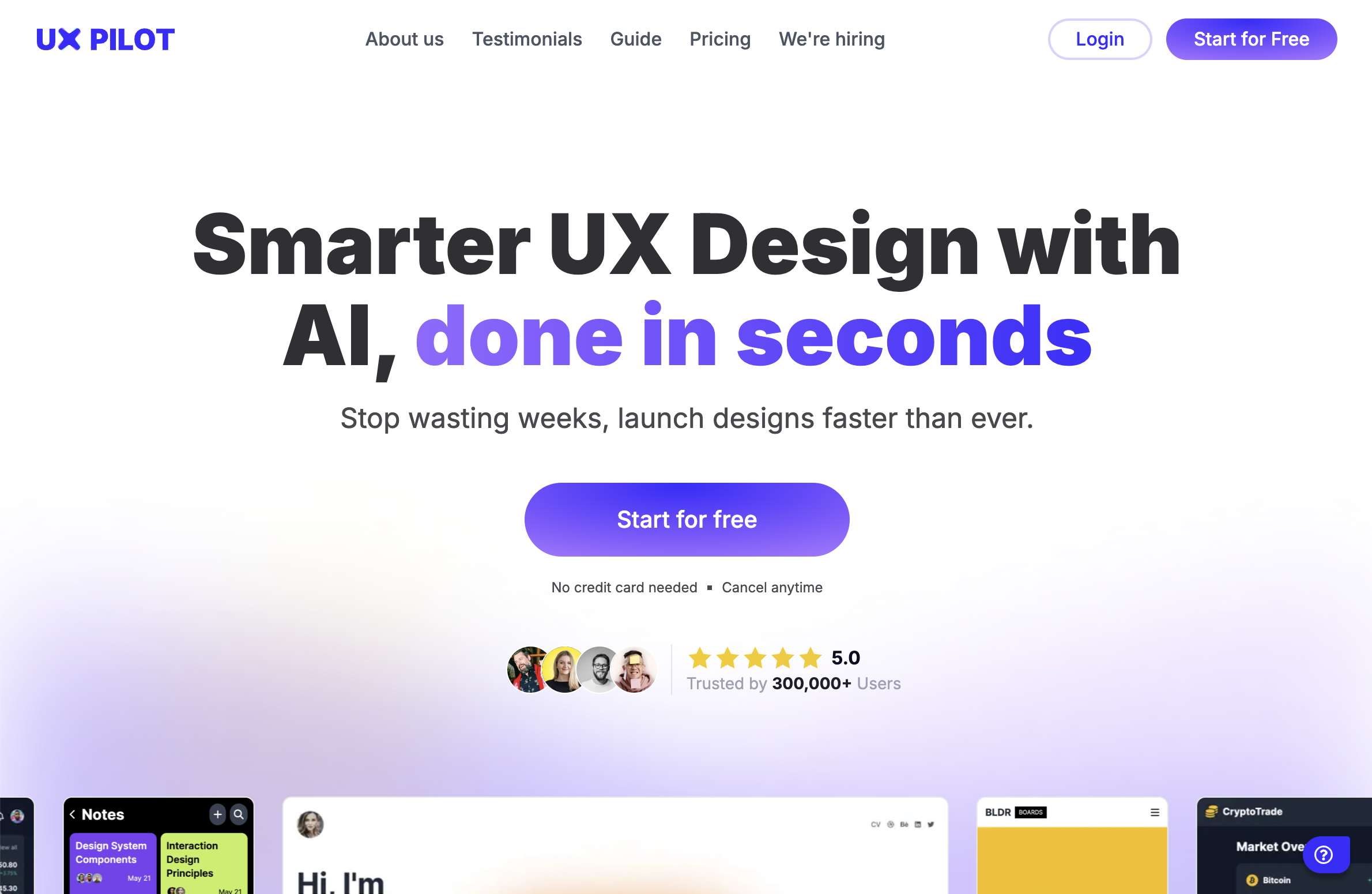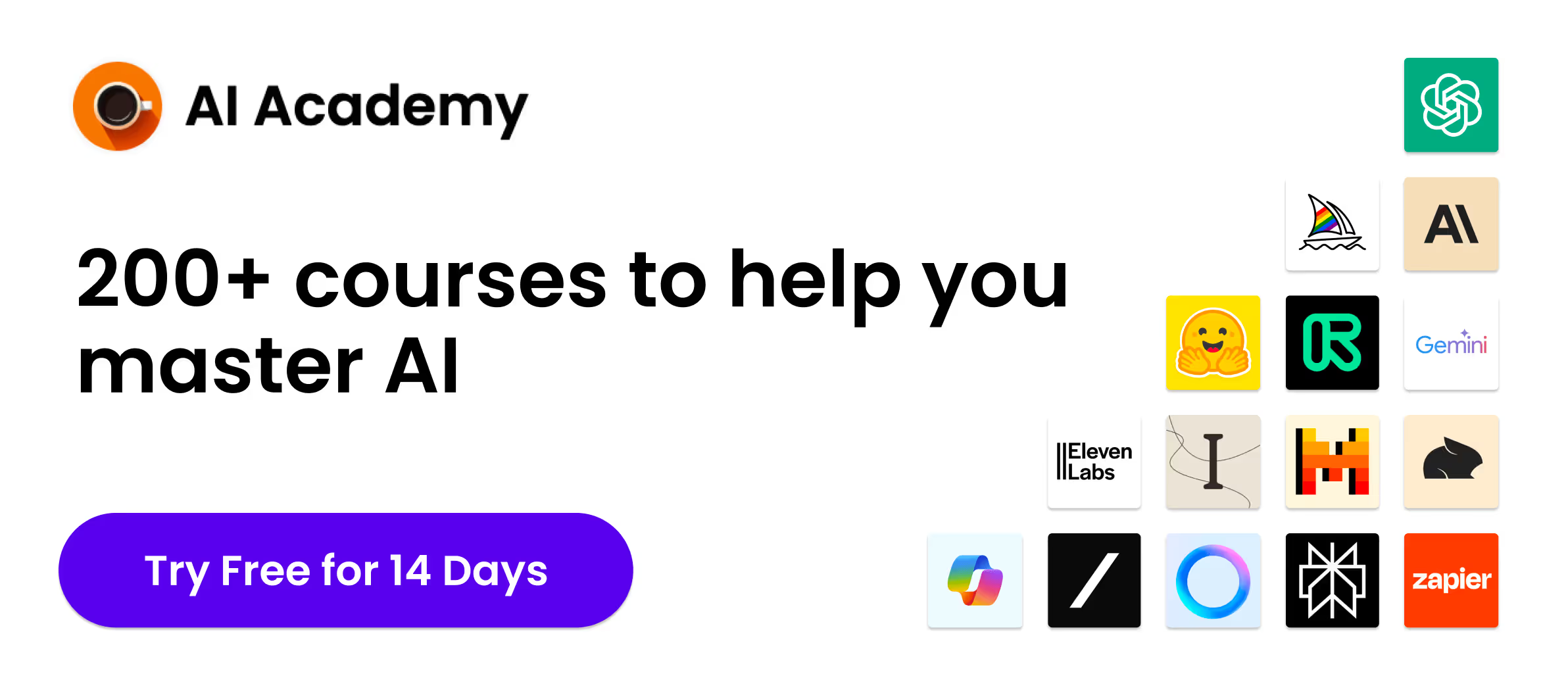What Is UX Pilot?
UX Pilot is an AI-powered design workspace built to wipe out the slowest parts of UX/UI creation. Instead of juggling wireframing tools, design systems, heat-mapping apps, and developer hand-off docs, you funnel everything into one browser tab (or Figma panel) and let the machine do the heavy lifting.
Give it a text prompt or a handful of sticky notes and it will draft layouts, predict attention patterns, even spit out production-ready code. The goal is speed without sacrificing logic: layouts that follow real UX heuristics, not cookie-cutter templates.
If your backlog of features keeps growing faster than your design resources, UX Pilot acts like an extra pair of senior hands—minus the additional head-count.
[cta text="Start using UX Pilot for FREE"]
Key Features
AI Wireframer
Need a quick skeleton for a new onboarding flow? Type a short brief, pick mobile or desktop, and the AI Wireframer generates low-fidelity frames in seconds. Because the algorithm understands information hierarchy, you get sensible spacing, proper affordances, and screen-to-screen continuity that feels human-designed.
High-Fidelity Designer
When stakeholders demand polished mock-ups, switch to Hifi Designer. It layers typography, color, and imagery on top of the wireframe with pixel-level precision. You can iterate via a chat interface—ask for a darker hero section or bigger CTA and watch edits appear live.
Predictive Heatmap
Before you run usability tests, the Predictive Heatmap simulates where users will focus, scroll, and click. Hot zones glow right on your canvas, flagging distractions or dead weight. It is an instant gut-check that saves rounds of expensive A/B testing.
Design Review Bot
UX Pilot also runs automated heuristic reviews. It highlights low contrast, cramped touch targets, or unlabeled form fields, then offers short recommendations. Think of it as a built-in QA buddy that never gets tired.
Code and Figma Export
Once a layout is approved, hit Export to hand clean React, Vue, or plain HTML/CSS straight to devs. Prefer staying inside Figma? The official plugin syncs screens (and your plan’s credits) between the web app and Figma, so you never redo work.
[cta text="Start using UX Pilot for FREE"]
Pricing
UX Pilot uses a credit system. Every generation—wireframe, screen, heatmap—costs a few credits, keeping billing predictable.
Free Plan: $0 per month, enough starter credits to test wireframing, hifi, and heatmaps.
Standard Plan: $12 per month for roughly 420 credits, good for about 70 screens. Ideal for solo designers who ship weekly.
Pro Plan: $22 per month for 1,200 credits and up to 200 screens, plus unlimited screen-flow generations, Figma component imports, and Image-to-Design.
Enterprise: Custom pricing, unlimited usage, role-based access, private model hosting, and priority support.
Annual billing trims costs by roughly 25 percent across paid tiers.
FAQ
Can I try UX Pilot without paying?
Yes. The Free plan unlocks a limited pool of credits so you can generate wireframes, high-fidelity comps, and a couple of heatmaps before deciding.
How do the credits work?
Each action—like generating three new wireframes—deducts credits. Paid tiers simply give you larger monthly credit buckets, and unused credits roll over until your next billing cycle.
Does the Figma plugin cost extra?
No. One subscription covers both the web dashboard and the Figma plugin. Your existing credits are shared between them.
Is my design data secure?
Projects are encrypted in transit and at rest. UX Pilot states that your private files are not reused to train public models, and you can delete data anytime from the workspace settings.
Can I cancel or downgrade anytime?
Absolutely. Plans are month-to-month. Cancel from the billing tab and your account reverts to Free at the next cycle.
UX Pilot hits a sweet spot for teams that value momentum. By folding ideation, visual polish, validation, and hand-off into one streamlined flow, it clears the runway for product launches instead of adding another shiny distraction. If your biggest blocker is design hours, this might be the little robot that finally buys them back.
.png)


